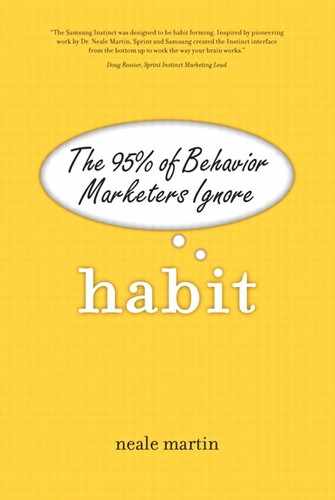Positioning in the Retail Environment
According to my publisher, a book has somewhere between three and ten seconds to grab your attention in the bookstore. A single copy of a book that is spine out on a shelf with 30 other books in a section of several hundred books in a store of thousands of books is unlikely to be discovered. The odds that you found this book in a bookstore without prior knowledge are directly proportional to its placement and the number of copies available.
The science of merchandizing tells us the value of products being at eye level, the colors most likely to be noticed, and why items on end caps sell so well. These findings reflect both a customer’s habits and sensory processing. As mentioned earlier, our senses evolved not to give us an accurate perception of the world, but to help us survive in a hostile environment. Consequently, our senses present a highly biased view of our surroundings, paying attention to change and motion. Our visual system also focuses on an object’s edges, to better separate it from the background.
Books disappear in bookstores similar to sweaters in clothing stores and soup cans on grocery shelves. We find them because we are looking for them or something similar to them. The same goes for e-commerce sites that unfortunately repeat the mistakes of the real world in the virtual one. As we mentioned in the section on branding, every physical feature of the brand, product, and packaging can serve as a cue to automate the purchase process. However, if that feature is not part of a customer’s existing purchase repertoire, it’s more likely to simply become part of the background noise that the senses ignore.
This leads to promotion, in which companies attempt to communicate with customers to be on the lookout for their products and services.
